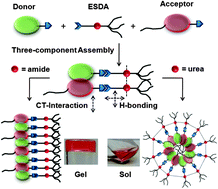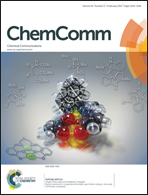Three component assemblies by orthogonal H-bonding and donor–acceptor charge–transfer interaction†
Abstract
Three component supramolecular assemblies from a mixture of an aromatic donor (D), acceptor (A) and external structure directing agent (ESDA) are achieved by orthogonal noncovalent interactions involving two different types of H-bonding and alternate D–A stacking. An ESDA containing amide or urea produces a charge–transfer gel and sol, respectively, owing to their contrasting morphology.


 Please wait while we load your content...
Please wait while we load your content...